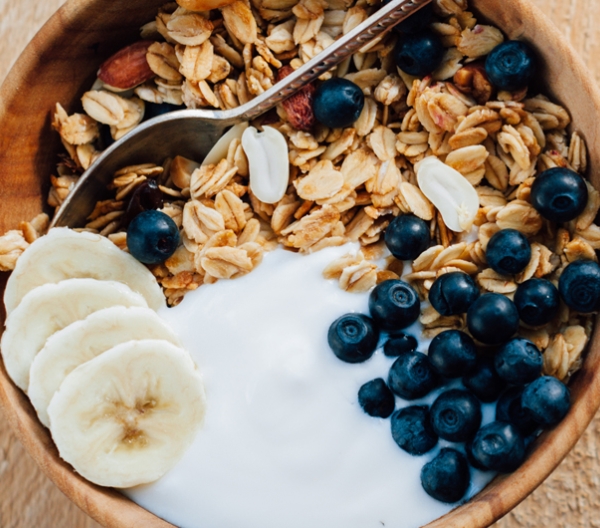“Three-fourths of the world’s population—and about a quarter of the U.S. population—loses its ability to digest the milk sugar lactose after weaning,” says Dennis Savaiano, professor of nutrition science at Purdue University.
In those people, the gene that tells the body to produce lactase turns off over time. (Lactase is the enzyme that breaks down lactose into glucose and galactose, which can be absorbed into the bloodstream.)
As a result, they end up losing about 95 percent of the lactase in their gut. So intact lactose makes its way to the colon, where it gets fermented by bacteria. The fermentation releases gases and draws water into the colon, which can cause stomach cramping, diarrhea, and flatulence in some people.
How much lactose can you eat if you have lactose intolerance?
But just because you are a “lactose maldigester”—that is, you’ve lost most of your ability to break down lactose—doesn’t mean you need to avoid dairy forever.
For starters, many dairy foods, like hard cheeses, don’t have much lactose—just a gram or so per serving. (Scroll down for a chart of how much lactose to expect in a serving of common foods.)
What’s more, “most people can tolerate far more lactose than they realize,” says Savaiano.
“I’m a maldigester. If I were to have, say, two glasses of milk on an empty stomach, I would get symptoms. But if I were to have a cup of milk in my oatmeal, I probably wouldn’t notice it.”
That’s because both the amount of lactose and the speed at which it moves through the gut influence symptoms.
“If you have milk with other food, you’re slowing its transit through the intestine, and that helps your body digest more of it,” explains Savaiano, some of whose research has been funded by the dairy industry.
“We did a blinded study on lactose maldigesters where we showed that most people can have about 12 grams of lactose—the amount in a cup of milk—without getting symptoms.”
What about lactose in yogurt?
“Yogurt bacteria have a very high level of the lactase enzyme,” notes Savaiano. “The enzyme becomes active in the intestine, where it breaks down the yogurt’s lactose. It turns out that eating yogurt is like eating a lactase pill with a glass of milk.”
Most surprisingly, Savaiano has shown that people can turn their intolerance into tolerance.
“In one study, we adapted people slowly by giving them increasing amounts of lactose in water with their meals. After 10 days, they were able to consume 70 grams of lactose a day. That’s a lot of lactose.” (It’s the equivalent of nearly six cups of milk.)
Did the maldigesters start producing more lactase enzyme? No. The bacteria in their guts rose to the challenge by digesting the excess lactose.
What to do if you have lactose intolerance
Want to try to turn your intolerance into tolerance? “Start with a small amount,” says Savaiano. “Maybe a ¼ cup of milk with breakfast. If you tolerate that for a few days, go up.”
“At some point, you might exceed the capacity of the gut to adapt, and you’ll get symptoms.”
Until then, got milk?


